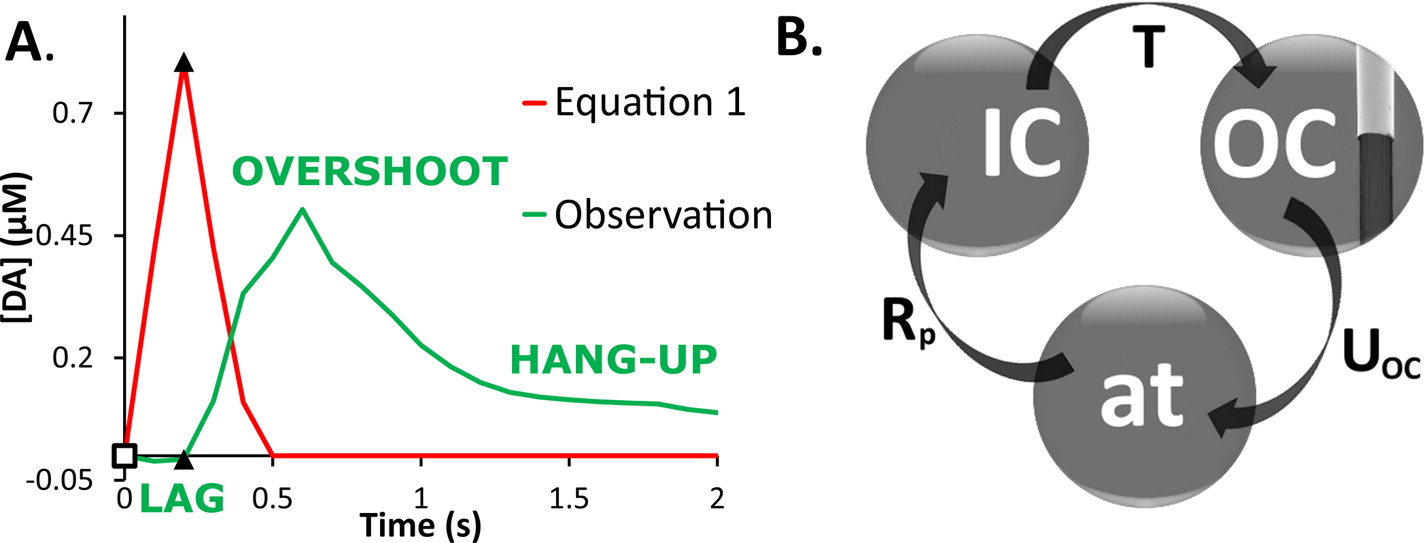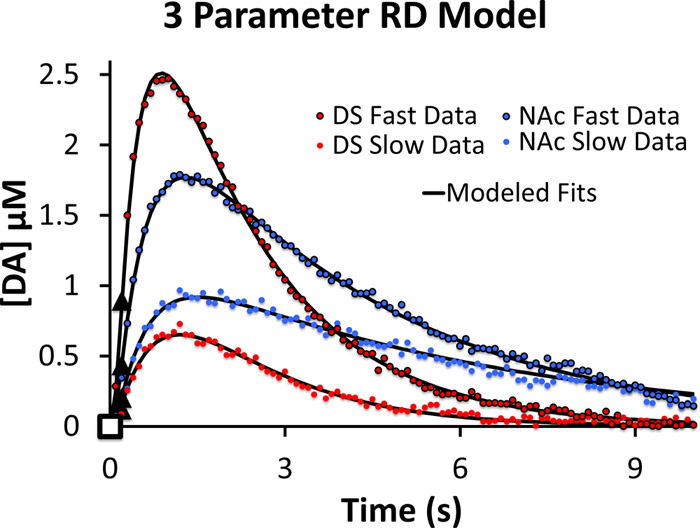| The Michael Group University of Pittsburgh |
|---|
|
A Novel Restricted Diffusion Model of Evoked Dopamine In vivo fast-scan cyclic
voltammetry provides high-fidelity recordings of electrically evoked
dopamine release in the rat striatum. The evoked responses are suitable
targets for numerical modeling because the frequency and duration of
the stimulus are exactly known. Responses recorded in the dorsal and
ventral striatum of the rat do not bear out the predictions of a
numerical model that assumes the presence of a diffusion gap interposed
between the recording electrode and nearby dopamine terminals. Recent
findings, however, suggest that dopamine may be subject to restricted
diffusion processes in brain extracellular space. A numerical model
cast to account for restricted diffusion produces excellent agreement
between simulated and observed responses recorded under a broad range
of anatomical, stimulus, and pharmacological conditions. The numerical
model requires four, and in some cases only three, adjustable
parameters and produces meaningful kinetic parameter values.
| |||||||

